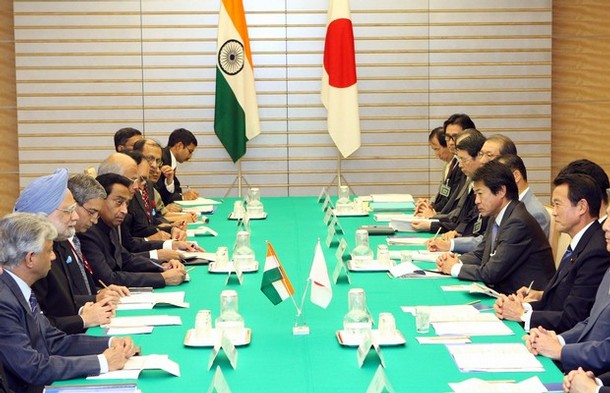In April 2005, the two countries agreed to set up a Joint Study Group (JSG) for a free trade agreement (FTA). The JSG in 2006 recommended a Comprehensive Economic Partnership Agreement (CEPA). Negotiations were launched in January 2007 covering trade in goods and services, investment flows, trade promotion and measures for promoting economic cooperation in identified sectors.
Even after ten rounds of negotiations, a number of issues in the proposed India-Japan CEPA are yet to be resolved, including items in the negative list of products to be protected from tariff-cuts and quality control norms for import of farm goods. Tariffs (import duties) on most goods in Japan are already low. Thus, a critical determinant in greater market access for Indian products in the Japanese market would be the reduction of existing non-tariff barriers (NTBs).
Indian concern lies over Japanese technical barriers to trade (TBT) and its stringent sanitary and phytosanitary measures (SPS), which act as NTBs to Indian export items, such as pharmaceuticals, chemicals, biotechnology, and cosmetics sector goods. Indian pharmaceutical companies have not been able to tap the Japanese market’s full potential due to the country’s stringent SPS, TBT and environmental norms. Japan provides the world’s second-largest drug market. At the moment it takes an Indian pharmaceutical exporter 5-7 years to start exporting from the date of application.
Japan is not about to agree to a mutual recognition agreement (MRA) in pharmaceutical sector, which would enable both countries to identify the testing procedures and standards used in the other country for their goods. India’s demand is to have standards uniform to those set by US Food and Drug Administration (FDA), but Japan contends that these are not stringent enough and is resolutely pushing for its own set of testing measures.
Japan’s interests lie in automobile and chemicals, while Indian industry seeks total protection for these items. India, on the other hand, is keen on expeditious implementation of quality control norms in Japan. Export of Indian agricultural goods, chemicals and pharmaceuticals face various NTBs in Japan. Indian industry feels that the implementation process of SPS norms in Japan is so long that, in the case of mangoes, it took 15 years for India to get clearance. Rules of origin, which lay down how much of an imported input should be allowed in a product being traded under the CEPA, is another contentious area.
In services, the major hurdle lies in the area of mutual recognition agreements (MRA) wherein both parties accept foreign professionals with degrees and diplomas offered in their home country. Also, a 15 per cent withholding tax — the share of the payment withheld by the paying party on account of taxes — levied by Japanese authorities is also a major hurdle discouraging Indian professionals from working in Japan, and needs to be sorted out.
After clinching the FTA with ASEAN and sorting out outstanding issues for a CEPA with South Korea, India is keen to conclude the CEPA with Japan. It is expected that an Agreement would help the two countries increase their share of Asia’s economic output in the coming years. The recent surge in Japanese FDI in India (to the tune of $5 billion this year so far against less than $500 million last year) indicates the increasing interest of Japanese investors in India. Indian industry expects the CEPA to lead to greater flow of technology and investments from Japan into India. Yet, if the current global financial crisis continues to affect the global economy for long, it would most likely impact the growing economic relationship between India and Japan. To what extent the present crisis will affect the negotiation of a comprehensive economic partnership between India and Japan relations is an open question.
A CEPA between these two large economies in Asia would certainly assist in developing an understanding that was helpful to the early conclusion of the WTO’s Doha Round negotiations. And that is vital for the maintenance and development of the international trade system.


Old, but still I enjoyed to read this!